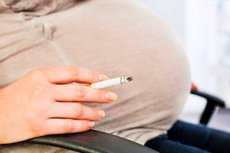
在最近发表在《科学进展》杂志上的一项研究中,科学家们研究了早期烟草暴露对衰老相关疾病的影响。他们发现,子宫内接触烟草与生物衰老加速有关。
研究表明,减少早期烟草暴露对于改善健康老龄化至关重要,因为它会显著影响生物衰老并与年龄、性别和饮食等各种因素相互作用。
生物性衰老是一个复杂的过程,其特征是细胞变化的积累,逐渐损害组织和器官的完整性。这会导致患病风险和死亡风险增加,并给卫生系统带来沉重的财政负担。近期研究强调了使用各种生物标志物量化生物年龄(BA)以准确预测健康结果的重要性。早期环境暴露,尤其是烟草暴露,是成年期不良健康结果的重要风险因素,这一点尤其受到关注。
该研究使用多种生物标志物,包括端粒长度 (TL) 和临床参数的综合算法,检查了早年烟草暴露与成年生物衰老之间的关联。此外,研究还研究了遗传易感性和烟草暴露对加速生物衰老的综合影响,这可以为旨在健康老龄化的预防和治疗干预措施提供参考。该研究使用了来自英国生物样本库的数据,这是一项基于人群的队列研究,涵盖了 2006 年至 2010 年间入选的近 50 万名年龄在 37 至 73 岁之间的参与者。排除后,共有 276,259 名参与者被纳入研究。早年烟草暴露,包括产前暴露和开始吸烟的年龄,通过自我管理问卷进行评估。生物年龄是使用经 NHANES 数据验证的 Klemera-Doubal 生物年龄 (KDM-BA) 和表型年龄 (PhenoAge) 算法确定的。
采用定量聚合酶链式反应测量白细胞中的总淋巴细胞长度 (TL)。利用与衰老表型和总淋巴细胞长度 (TL) 相关的遗传变异构建多基因风险评分 (PRS)。
参与者基线比较显示,产前暴露者往往年龄较小,多为男性,且饮酒可能性更高。他们的体重指数 (BMI) 和汤森剥夺指数 (TDI) 也更高,基础疾病患病率也更高。
进一步的统计分析显示,早年接触烟草与生物衰老加速之间存在一致的关联。
尤其值得注意的是,宫内暴露的受试者在KDM-BA和PhenoAge加速方面均显著增加,同时端粒长度(TL)也显著缩短。具体而言,宫内暴露与KDM-BA加速增加0.26年、PhenoAge加速增加0.49年以及端粒长度缩短5.34%相关。
此外,研究还观察到吸烟开始年龄与剂量反应关系明显,吸烟年龄越早,生物衰老指数加速越快。
例如,与从不吸烟者相比,儿童时期接触烟草会导致 KDM-BA 加速增加 0.88 年,PhenoAge 加速增加 2.51 年,TL 下降 10.53%。
对遗传倾向和早年吸烟的综合影响的研究强调了对加速衰老的重大影响。
多基因风险评分 (PRS) 较高以及产前暴露或早期开始吸烟的人表现出最明显的生物衰老指标加速。
分层分析进一步揭示了早期烟草暴露与人口统计或生活方式因素之间的微妙相互作用。
例如,在子宫中暴露于辐射的年轻参与者表现出生物衰老指标加速,而生活在高度贫困地区的参与者的这种影响更为显著。
这项研究调查了早期接触烟草(包括胎儿发育、儿童期和青春期)与成年期生物衰老速度加快之间的关系。
在一项大规模分析中,产前烟草暴露和开始吸烟的年龄与衰老速度加快和端粒长度缩短有显著相关性。
这项研究的结果强调了早期烟草接触、遗传倾向和影响生物衰老轨迹的环境因素之间的多方面相互作用。

